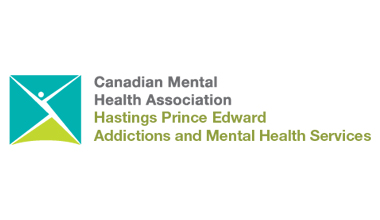
Mood Disorders - Seasonal Affective Disorder
With leaves changing and the amount of daylight hours shrinking, it can feel draining. Read below to learn more about Seasonal Affective Disorder (SAD) and how you can support yourself and other's who may be experiencing SAD.
Definition
To define Seasonal Affective Disorder, it’s helpful to know what Depression is first. Depression is a type of mood disorder. It is a serious illness characterized by intense and prolonged feelings of sadness, apathy and/or low energy. Think about mood as if it were a sliding scale: If someone feels “stuck” in a very low mood for a prolonged amount of time, or finds it hard to feel content or happy for any length of time it might be Depression.
When someone has recurring episodes of depression that start and end in a seasonal pattern (usually coinciding with winter), they might have Seasonal Affective Disorder (SAD). SAD is also called ‘seasonal depression’, ‘winter depression’ or ‘major depression with a seasonal pattern’. It is considered to be a sub-type of Depression.
SAD isn’t the same as feeling sad or experiencing grief. Sadness and grief are normal responses to the inevitable losses and disappointments in daily life, but having a form of Depression is more than being sad or feeling grief after a loss. It is not something someone can “snap out” of.
Often there is no obvious reason why depression happens to someone, but with Seasonal Affective Disorder, it is triggered or made worse by the change of seasons.
It is not:
- Just the “winter blahs”.
- “Just a phase” or something someone can “snap out of”.
- A sign or result of low intelligence or weakness.
- Always caused by an event or definitive “reason”.
Causes
There is no single cause of SAD or any other mood disorder. The more risk factors a person has, the more at risk they are for developing a Mood Disorder.
One major risk factor for SAD is the region in which they live. People that live far from the equator (either in the North or South end of the earth) are more likely to get Seasonal Affective Disorder, probably because these are the regions of the world that experience the most drastic changes from summer to winter.
There are many ideas about how exactly the seasonal change causes a person to have SAD. In winter months, there is a decrease in sunlight which can upset a person’s internal “clock” and cause a reduction in the brain chemicals associated with positive mood. Some people, however, experience their cycle of low mood in the spring and summer months, referred to as Summer Onset SAD. This is a much less common form of SAD, but is also thought to be connected to the change in sunlight hours that can throw off our body clock and mood.
It could also have to do with the way our bodies and brains cope with cold, air pressure changes and changes in activity levels (for instance, people may be more likely to stay indoors during winter months and be less active).
So why do some people get SAD while others don’t? Like all mental health issues, SAD is complicated and can be caused or triggered by any combination of factors:
- Biological - SAD has been linked to family history.
- Psychological - People who already have a mood disorder are more likely to have a form of SAD.
- Physical - Anyone can get SAD but women seem to be diagnosed more, while men with SAD tend to have more intense symptoms.
- Environmental factors - Living far away from the equator.
Signs and Symptoms
Below is a list of signs and symptoms for Seasonal Affective Disorder. The following list should not be used to diagnose yourself or someone else. It is only intended to provide general information. If you think you might be experiencing a mental illness, you should see your doctor.
These signs can be explained by a number of factors or other illnesses, and anyone at some point or another may feel or behave in these ways whether they have a mental health issue or not. You may see behaviours and feelings described here that everyone has at times.
Depression can change how you feel physically, your thinking, your emotions and your behaviour, and with SAD, these changes are usually seen or made worse in a seasonal pattern.
Important: There are a wide range of symptoms that a person can experience when they have a mood disorder like SAD, and each person may experience them differently. No two people are the same.
Physical changes that happen in a seasonal pattern:
- Reduced energy, becoming easily tired.
- Feeling less active or not active at all.
- Changes in weight and appetite.
- Irritability or restlessness.
- Sleep disturbances – trouble sleeping, or sleeping too much.
- Stomach or digestion problems.
- Physical symptoms with no physical cause ( e.g. headaches, muscle aches and pains, etc.).
- Symptoms reduce or disappear completely for at least two consecutive months when the season changes.
Changes in thinking that happen in a seasonal pattern:
- Thinking is slowed down, difficulty thinking, concentrating or remembering.
- Difficulty making decisions, avoiding making decisions.
- Thoughts of being a failure, critical or judgemental toward oneself.
- Obsessive thoughts, sense of impending doom or disaster, feeling like something bad is going to happen.
- Persistent thoughts of death, suicide or attempts to hurt oneself.
- Symptoms reduce or disappear completely for at least two consecutive months when the season changes.
Changes in feeling that happen in a seasonal pattern:
- Depressed/low mood, intense sadness or frequent crying.
- Loss of interest in activities that were once a source of pleasure.
- Loss of interest and enjoyment in work, hobbies, people.
- Decreased interest in and enjoyment from sex.
- Feelings of uselessness, hopelessness, excessive guilt, and worthlessness.
- Feeling numb, empty or an absence of feelings.
- Feeling detached from life or others.
- Reduced confidence and self-esteem.
- Impatience, anger and aggressive feelings, even over small matters.
- Symptoms reduce or disappear completely for at least two consecutive months when the season changes.
Changes in behaviour that happen in a seasonal pattern:
- Social isolation, withdrawal from work, school, friends, hobbies, etc.
- Neglecting duties such as homework, housework, or paying bills.
- Decrease in physical activity and exercise.
- Decrease in self-care (not showering, grooming, eating, etc.).
- Self-harming behaviours and/or risky behaviour (reckless driving, unprotected sex, etc.).
- Increased use of alcohol or drugs (prescription and/or non-prescription).
- Aggressive, abusive or controlling behaviour.
- Symptoms reduce or disappear completely for at least two consecutive months when the season changes.
Help
Seasonal Affective Disorder is treatable. For SAD or any other mental health concern, if signs or symptoms are interfering with your life in any way, or you’re feeling like you are in distress, it’s time to seek help. You don’t need to wait until things get really “bad” before you seek help.
For instance, if sleep patterns, eating, relationships, school, work, or enjoyment of life are being affected, it’s a good idea to talk to someone. That someone could be a friend you trust, a teacher, your family doctor, a crisis line, or counsellor.
If it is a friend you are concerned about, they may resist help or not even recognize that they need it. They might need you to make the first step.
As always, if you feel like your friend might hurt him/herself or someone else, it’s time to call emergency services.
Visit the Help Section to find out how to get help for yourself or a friend.
Treatment
Like other mental health issues, Seasonal Affective Disorder and how it is experienced will differ from person to person. Because each case is unique, the treatment will likely be unique for each individual.
Treatment for SAD may include a combination of strategies. Once common form of treatment is light therapy. Light therapy consists of a person spending time in front of a special light that mimics sunlight as part of their daily routine. Lights can be purchased and then used at home.
Lifestyle changes/strategies might also include things like diet changes (making an effort to eat fresh fruits and veggies if available), spending time outdoors and regular exercise.
Sometimes, while a person is living with SAD, part of the treatment might be about treating individual symptoms on a temporary or ongoing basis to make someone feel more comfortable while they try to get better. For instance, if someone is having trouble sleeping, a doctor might suggest treatment strategies to help that person get some sleep.
Medication can also be helpful to help stabilize someone enough to get the most out of therapy, counselling and living life. Every person is different, so if medication is used, it may take a while to find the medication that works best for you.
Sometimes spending time in a treatment clinic or hospital is necessary, while for others, outpatient (getting help for a professional without having to actually “stay over” in a hospital) is better.
If you have to wait to get an appointment, there are many places that offer support while you wait. Find out where to call in your area.
Along with treatment from your doctor or therapist, there are things you can do to help and support your own recovery.
Every story is different, and sometimes people need to try different types of supports before they find the right plan for them. Be patient, and don’t give up.
A person living with SAD, like any other person, will benefit from maintaining wellness and having good supports in their life.
Myths
SAD and other Mood Disorders are sometimes misunderstood by people who don’t have direct experience with it. Because everyone feels “low” from time to time, people who don’t have Seasonal Affective Disorder might get it mixed up with sadness or grief, feelings that are a normal part of life. Some common myths about SAD and other forms of Depression are:
Myth: Everyone feels a little low during the winter. The “winter blues” are the same as Seasonal Affective Disorder.
Fact: It’s natural to feel a loss of energy in the winter months. It’s common for people to go outside less, eat differently and feel more tired when the sunlight hours are shortened and the temperature drops. Most of the time people can make themselves feel better with a little self care, like by exercising, going outside and getting a good night’s sleep. People with SAD, however, experience intense symptoms, and often need medical intervention and treatment strategies to cope.
Myth: Seasonal Affective Disorder only happens in winter.
Fact: The majority of people who have SAD experience their symptoms in the winter months. However, there is another much less common form of SAD where people’s mood is affected in spring or summer. Many, but not all, of the symptoms of this form of SAD are quite similar to those of people who struggle in the winter.
Myth: Depression means feeling sad all the time.
Fact: Depression isn’t the same as sadness, and people who have Depression don’t always feel “sad”. Sometimes Depression shows itself through anger, worry, aggression, or apathy (not feeling or caring about anything). These feelings may come and go. Sometimes people who have depression may even seem “fine” to family and friends.
Myth: SAD and other Mood Disorders are all in your head. People who have SAD just need to cheer up, go outside and stop being so negative.
Fact: Telling someone with SAD to “just cheer up” is like telling someone with poor eyesight to just try harder to see better. It just doesn’t work that way. There are factors at play when someone has Depression that make it very difficult or impossible to have or maintain a “good mood” or feel positive without help. SAD is a treatable illness.
Myth: If someone has SAD, they’ll have it for life.
Fact: SAD varies, like any other mental illness, from person to person. Some people experience long breaks between SAD symptoms, while others continually need support every year. SAD, like Depression, is treatable.
Myth: There is no need to go to a medical doctor for treatment. Seasonal Affective Disorder can be cured by willpower, exercise, a walk outside or a great night of partying.
Fact: Will power and lifestyle changes alone are rarely, if ever, able to “cure” SAD. Mood Disorders are serious mental illnesses that require support and treatment.
Myth: When a person with a Mood Disorder talks about suicide, they don’t really mean it.
Fact: Not all people with Mood Disorders like SAD attempt suicide, but suicide is a risk when someone is depressed. Most people who are thinking of suicide say something about it before attempting it. If someone you know, whether you know them to be depressed or not, is talking about suicide, take them seriously.
Myth: People who “have it all” (a supportive family, wealth, power, etc.) are not likely to develop a Mood Disorder like SAD.
Fact: The causes and risk factors for SAD vary, and have nothing to do with how much money you have or how great your family is. SAD is caused by a number of factors that are beyond a person’s control and triggered by seasonal changes.
Myth: If I have a Mood Disorder like SAD, I’m going to have to go to the hospital.
Fact: For some, spending time in a hospital for serious Depression is part of the treatment strategy and can be tremendously helpful. There’s nothing wrong with that! Others will never have to go to the hospital, as psychotherapy, light therapy, medication, group counselling or other strategies may be enough to help someone get better when they have SAD.
Support
Supporting someone with any type of serious illness can be challenging. Ways to help and support a friend or loved one who is living with Seasonal Affective Disorder:
- Know the signs and symptoms of Depression and Seasonal Affective Disorder.
- Encourage habits and lifestyle changes that can support recovery, like eating healthy food, going outside every day and getting enough sleep, but know that these things along aren’t likely to “cure” SAD on their own.
- Encourage professional help for your friend when needed (see Help Section).
- If your friend is in the hospital, go and visit them if you are able. The hospital may be scary and overwhelming for them and a friendly face can help. Make sure to ask about visitor rules first.
- Help your friend to avoid triggers like substances or situations that can cause them to relapse or feel unwell.
- Treatment is a process. Medications and therapy can take time to help. Be aware of this and try to be supportive as your friend adjusts.
- Be a sounding board. Listening without judgement and without trying to “fix” their problems can be incredibly helpful.
- Stay calm and don’t take things personally. Sometimes a depressed state can really distort how someone perceives conversations or situations. How someone reacts or communicates when they have Depression may be confusing, distressing or even hurtful at times. They may be feeling overwhelmed and acting out, and it’s probably not about you.
- Ask your friend how else you can help. It may be as easy as just providing a distraction, asking them to do simple, relaxing things with you (like hanging out, watching a movie etc.).
- Some people need time to themselves, while others might need to spend time with people. Be supportive and try to resist the temptation to tell them what you think they need to do.
- Set some boundaries for yourself, and take care. You can’t help someone if you’re feeling overwhelmed yourself.
See the Help Section for more info about helping a friend and self care.
More on mindyourmind.ca
Paige interviews the band Broken Social Scene, where they talk about coping in winter:
Wellness tips for coping with the change of seasons:
- Change of Seasons - Fall
- Change of Seasons - Winter
- Change of Seasons - Spring
- Change of Seasons - Summer
A mood tracking app, Mind Your Mood, that allows you to track and make note of your mood over time.
Resources
The information on this page is a simple overview of a complicated health issue. The content has been taken from CAMH, CMHA, and the Mood Disorders Association of Canada. For more in-depth information, please visit these sources or speak to a medical professional.
Ontario – call ConnexOntario to find out where there are mental health supports in your community.
Crisis – in any situation where someone is at risk of hurting themselves or others, call 911 or a local crisis line.
- Author: mindyourmind
- Article Source: mindyourmind.ca








